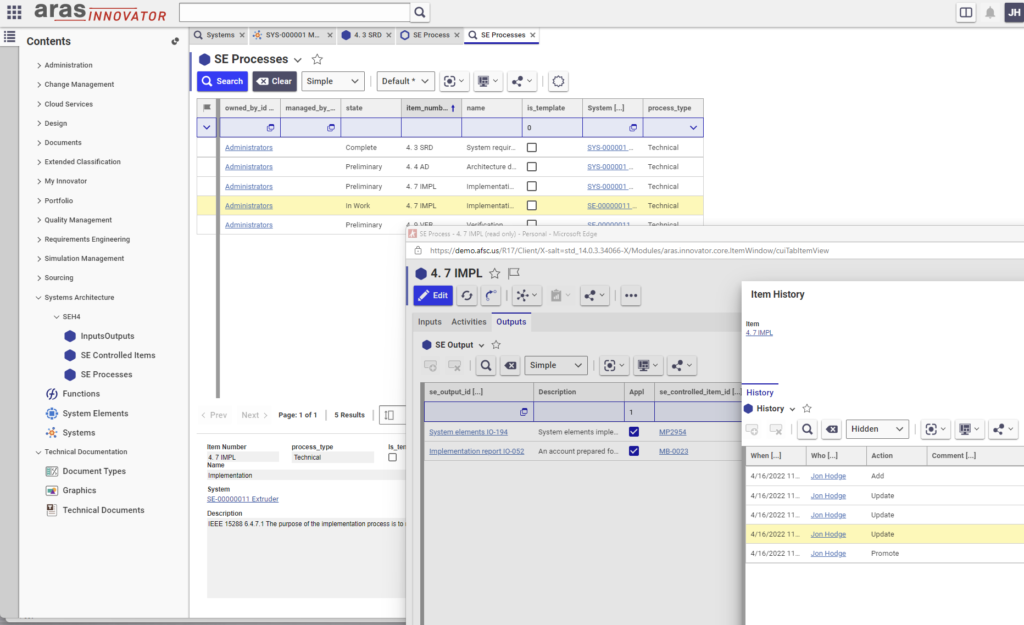Engineers use ingenuity to build things for the common good, “ingenuity” is the root of the word “engineer”. The path from a spark of ingenuity to a safe, reliable engine is rarely straightforward. Over time, engineers have developed ways of smoothing that path. Today, digital technologies enable groups of engineers to address problems of rapidly expanding complexity. The discipline of systems engineering is promoted by the global standard IEEE-15288, international council INCOSE®, and NIST. The council’s handbook describes the application of the Vee model and decomposes it to 35 processes with 250 shared inputs and outputs. Systems thinking is aligned with other, well known, prescriptions for getting things done:
- Be sure what you are trying to do before you start
- Decompose large tasks into smaller ones
- Use a common set of processes for each task
- Use a feedback loop to improve process for future tasks from results of past tasks

Aras Innovator® and the INCOSE Handbook share the purpose of applying ingenuity to building things. The SEH4 Package, illustrated above, uses the ingenious design of Innovator to create templates from which processes for systems or their elements can use inputs and outputs represented by Items. Input and output ItemTypes have properties of type ‘SE ControlledItem’, a PolyItem with sources Part, Document and CAD.
Types from other applications such as SA, DTC, SM, and TD can be added. As each process moves through its life cycle, trees of versioned inputs and outputs are built, default history is enabled. Promotions of SE Processes are manual, Aras practitioners know how to configure workflows for an organization’s products. Names and descriptions from the handbook build self-documented traceability to the principles of systems engineering. Permission from INCOSE for such use has been requested.
Click here to get the SEH4 Community Solution.